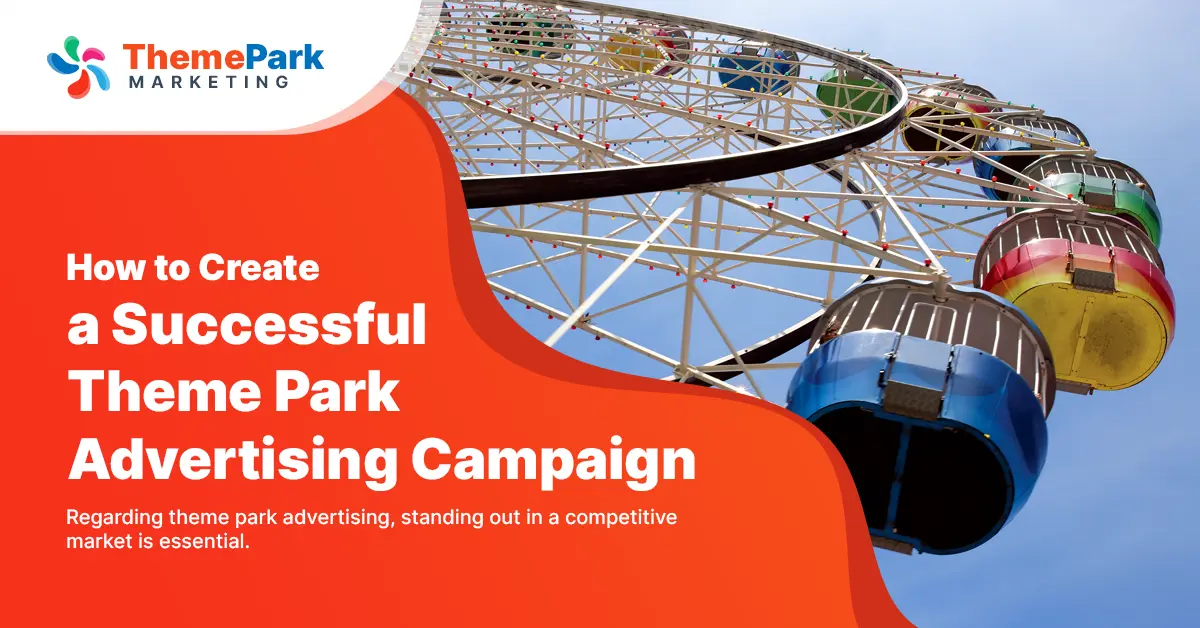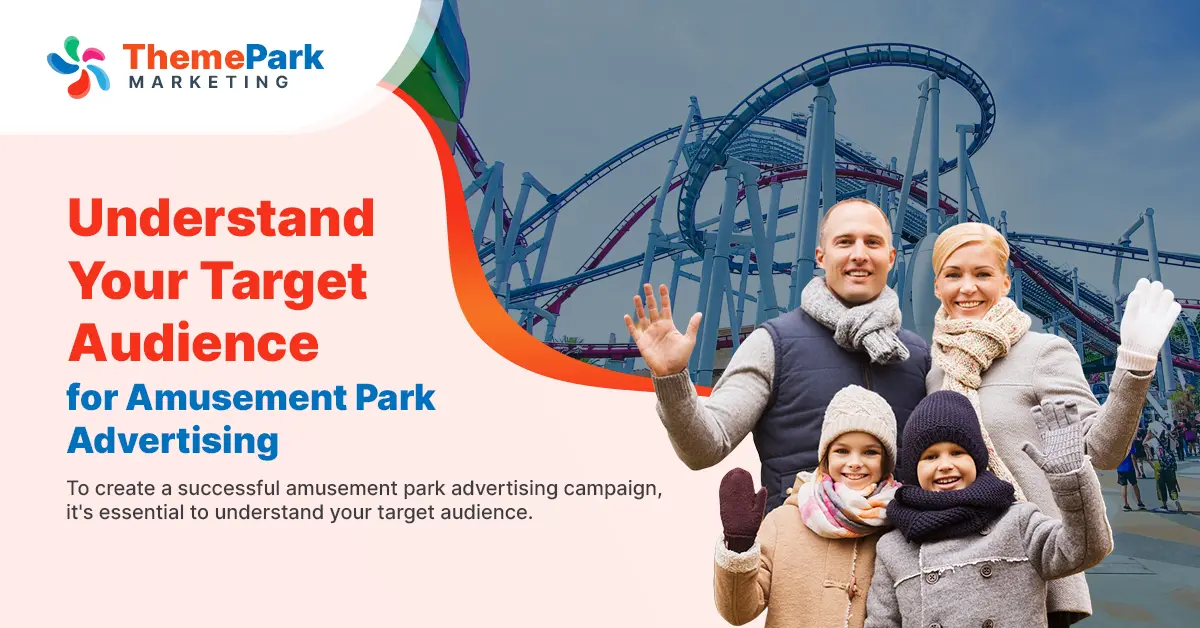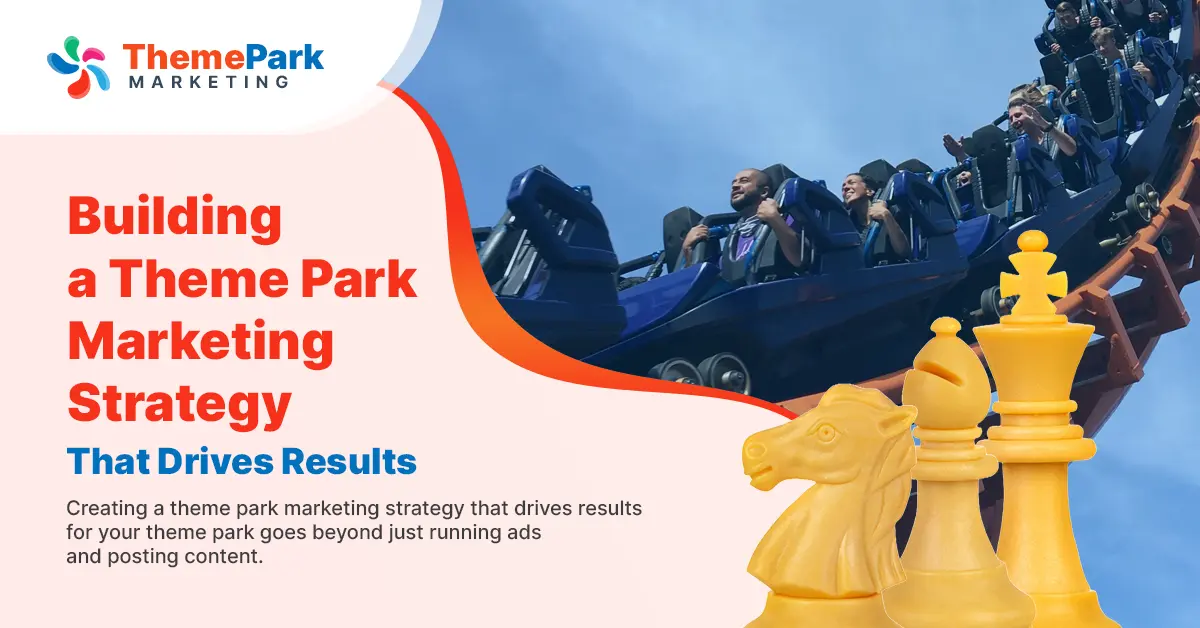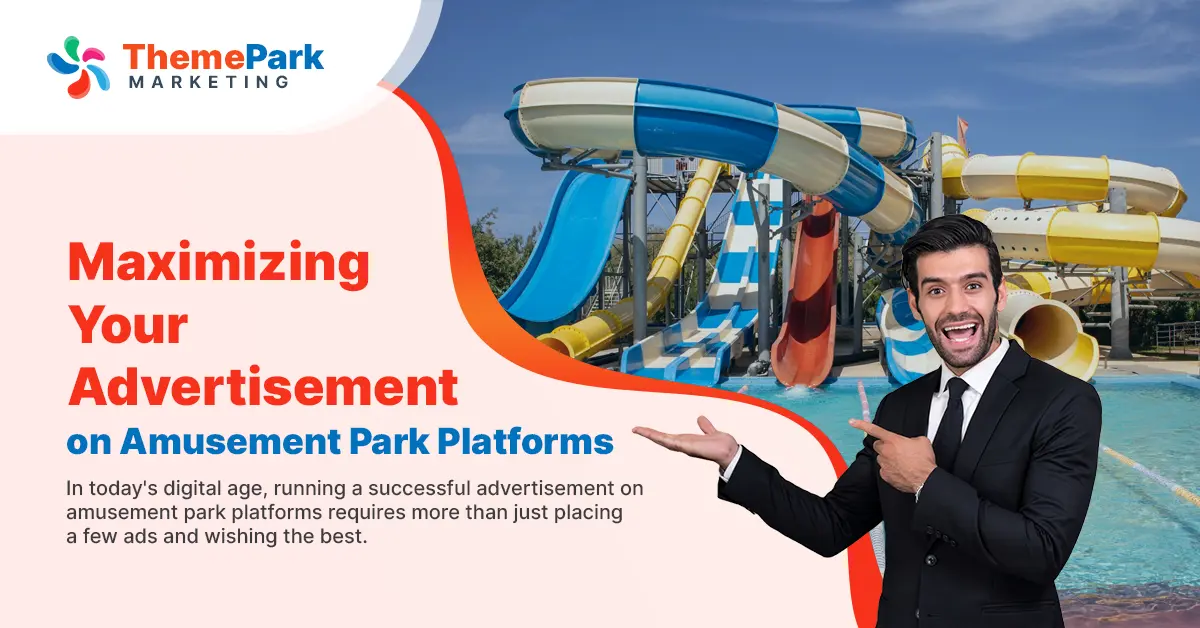
Regarding theme park advertising, standing out in a competitive market is essential. A successful advertising campaign isn’t just about promoting rides or events; it’s about creating an unforgettable experience that sparks excitement and drives visitors through your gates. With the right strategy, you can capture your audience, build lasting connections, and ensure your park gets the attention it deserves.
From targeted social media campaigns to eye-catching visual content, the key is understanding your audience and delivering your message where it matters most. Let’s dive into the steps you need to take to create a campaign that generates buzz and brings in the crowds.
Understand Your Target Audience for Amusement Park Advertising
To create a successful amusement park advertising campaign, it’s essential to understand your target audience. By knowing your potential visitors’ demographics, preferences, and behaviors, you can develop messages that resonate and drive action. Understanding your audience lets you choose the right channels and create engaging content that sparks excitement for your theme park.
Identifying Key Audience Segments
The first step in targeting your audience is identifying who you’re speaking to. Not all visitors are the same, so breaking them down into specific segments is important to refine your approach. Depending on your theme park’s offerings, you may want to focus on a few of these groups:
- Families with young children: Highlight kid-friendly attractions, family packages, and safety features. These visitors are often looking for fun, convenience, and value.
- Young adults and thrill-seekers: Emphasize extreme rides, high-speed roller coasters, and adrenaline-pumping experiences. For this audience, excitement and thrill are key selling points.
- Seasonal or event-driven guests: These visitors are drawn to special events, like holidays or summer festivals. Limited-time promotions and exclusive events will grab their attention.
Analyzing Demographics and Behavior
Once you’ve identified your audience segments, the next step is to dive into their demographics and behaviors. Understanding who they are and how they make purchasing decisions will help shape your messaging and advertising strategy.
- Age group and family structure: Determine whether your audience skews younger (thrill-seekers) or older (families). This can guide the tone and type of content in your advertisements.
- Income levels: Understanding the income bracket of your target audience can help you set the right price points in your campaigns. For instance, offer discounts or family deals if your audience wants budget-friendly options.
- Online behavior: Research whether your audience tends to book last-minute or plans in advance. Knowing how and when they book will allow you to time your ads accordingly.
Personalizing Your Message
To make your advertisements more effective, you need to tweak your message to meet the specific needs of each segment. Personalization will help create a stronger connection with potential visitors and increase your chances of engagement.
- For families: Focus on creating ads highlighting safety, convenience, and family-friendly attractions. Ensure your messaging emphasizes fun for all ages, whether kiddie rides, family discounts, or accessible amenities.
- For thrill-seekers: Use high-energy visuals and bold language to showcase your park’s most thrilling rides. Feature speed, height, and unique experiences that cater to those looking for a rush.
- For seasonal guests: Offer exclusivity by promoting seasonal events, limited-time offers, and the uniqueness of visiting during specific times of the year. This creates a sense of urgency and excitement.
By locating and analyzing your audience, you can design a theme park advertising campaign that speaks directly to their needs, driving engagement and attendance.
Building a Theme Park Marketing Strategy That Drives Results
Creating a theme park marketing strategy that drives results for your theme park goes beyond just running ads and posting content. It involves crafting a comprehensive plan that combines clear goals, effective channels, and consistent messaging to attract visitors, increase engagement, and build lasting brand awareness. With the right strategy, your park can stand out in the competitive world of amusement and theme park advertising.
Setting Clear Goals for Your Campaign
Before launching any marketing efforts, defining clear, measurable goals is crucial. These goals are the foundation for your entire campaign, guiding your decisions and helping you track performance.
- Increase ticket sales: Whether you want to boost daily sales, increase group ticket purchases, or grow seasonal pass sign-ups, having a clear sales target will allow you to focus on driving conversions.
- Boost online engagement: Social media engagement, website visits, and app downloads contribute to heightened brand awareness. Set targets for growing your online presence through likes, comments, shares, and various forms of interaction.
- Enhance brand awareness: Your marketing campaign may aim to increase the visibility of your park, especially if it’s newly launched or undergoing rebranding. Increasing brand recognition can be a long-term goal that ultimately helps with ticket sales and repeat visits.
By establishing specific goals, you can craft a marketing strategy to achieve measurable outcomes, ensuring every action you take aligns with your business objectives.
Choosing the Right Marketing Channels
Once you’ve defined your goals, the next step is selecting the best channels to reach your audience. The digital landscape offers many platforms to advertise your theme park, each with its strengths.
- Social media: Instagram, Facebook, and TikTok are perfect for showcasing high-energy visuals, promotions, and event updates. Social media ads let you to target specific demographics, such as families, thrill-seekers, or seasonal visitors.
- Email marketing: Keep your visitors engaged with personalized offers, updates on new attractions, and event information. Use email campaigns to promote special discounts, limited-time offers, and VIP experiences.
- Google Ads: Target people searching for theme parks, rides, and family attractions near them. With Google Ads, you can capture users’ attention when they are in the decision-making process.
Selecting the proper channels is key to maximizing your reach and engaging your audience in a way that resonates with them. Consider your audience’s behavior and preferences to determine which platforms they frequent most and how they prefer to receive information.
Creating a Content Calendar to Maintain Consistent Messaging
Consistency is a vital element in any marketing strategy. Creating a content calendar ensures your messaging remains cohesive and your audience stays engaged across all channels. A content calendar lets you adjust your posts, emails, and ads, aligning them with your promotional goals and special events.
- Event-driven content: If your park hosts seasonal events, create content that teases upcoming festivities and drives anticipation. Use countdowns, sneak peeks, and behind-the-scenes content to build excitement.
- Themed campaigns: Launch campaigns around holidays, summer breaks, or special promotions. For example, a summer campaign could feature family discounts, while a Halloween campaign can highlight spooky attractions and themed rides.
- User-generated content: Encourage visitors to provide experiences by featuring their posts on your channels. This can increase authenticity and drive more organic engagement.
By planning your content ahead of time, you’ll maintain a consistent and strategic approach that aligns with both your short-term and long-term goals.
Maximizing Your Advertisement on Amusement Park Platforms
In today’s digital age, running a successful advertisement on amusement park platforms requires more than just placing a few ads and wishing the best. To truly maximize your ad spend and reach your ideal audience, it’s essential to strategically leverage these platforms in ways that increase visibility, engagement, and conversions. By optimizing your advertising efforts, you can ensure that your theme park’s ads stand out and make a lasting impact.
Leveraging Digital Platforms for Targeted Ads
Social media, Google Ads, and mobile apps have become essential tools for amusement park advertising. These platforms allow you to reach potential visitors at the right moment and with the right message. Here’s how to make the most of them:
- Social media advertising: Instagram, Facebook, and TikTok are perfect for sharing high-energy visuals and promotions. Social media ads can be tweaked to specific demographics, such as families, thrill-seekers, or local visitors. You can use carousel campaigns to showcase multiple rides, limited-time offers, and behind-the-scenes content that excites your audience.
- Google Ads: You can target users actively searching for related terms, such as “theme park tickets” or “best roller coasters near me.” With its powerful targeting features, you can reach people ready to make a decision, driving them to your website to buy tickets.
- YouTube Ads: Video content is incredibly engaging, and YouTube ads are a great way to showcase your park’s most thrilling rides or special events. Use dynamic video ads that highlight exciting experiences and offer viewers a glimpse of what awaits them at your park.
Using these platforms effectively ensures that your ads reach the right people at the right time, making the most of your advertising budget.
Using Location-Based Targeting for Maximum Reach
Location-based targeting is a potent tool when it comes to theme park advertising. After all, most visitors will be local or within driving distance of your park, so ensuring your ads are shown to the correct geographic audience is key.
- Geo-targeting: Use geo-targeting on platforms like Google Ads and Facebook to show your ads to people in specific locations. This is particularly useful for amusement parks that attract local visitors or tourists already in the area.
- Local event promotions: If your park hosts a special event, such as a concert, seasonal festival, or exclusive ride opening, geo-target your ads to people near your park to drive immediate foot traffic.
- Regional targeting for tourists: If you’re a popular destination, target ads to people planning trips to your city or region. You can target these visitors with ads that offer discounts, group packages, or special experiences for out-of-town guests.
With location-based targeting, you can ensure your ads are relevant and reach the audience most likely to visit your park.
The Power of Dynamic and Engaging Ads
Static ads are often less effective in today’s fast-paced digital world. To stand out, you must create dynamic and interactive ads that grab attention and engage your audience in real-time.
- Video ads: Videos are a great way to show potential visitors the thrills and excitement that await them at your park. Whether it’s a quick, high-energy teaser of your best rides or a more in-depth look at your seasonal events, video ads can drive higher engagement rates than static images alone.
- Interactive ads: On Instagram and Facebook, you can create interactive ads such as polls, quizzes, or challenges that calls users to participate and engage with your brand. For example, create a poll asking which ride is their favorite, then send them an ad with a discount for their chosen ride.
- Retargeting ads: Use retargeting ads to reach users who have interacted with your page or social media pages but haven’t yet made a purchase. Retargeting can bring potential visitors back to your site and increase conversion rates by reminding them of your park’s fun experiences.
Interactive and engaging ads catch attention and create a thorough connection with your audience, encouraging them to act.
Conclusion
Creating a successful theme park advertising campaign is a thrilling journey that combines creativity, strategy, and the power of digital marketing. By understanding your audience, building a solid marketing strategy, and optimizing your ad platforms, you can make your park a top destination for visitors looking for fun, excitement, and unforgettable experiences. The road to success lies in staying engaged with your audience, tailoring your messaging to their needs, and continually refining your approach to get the best results.
Let’s create a campaign that brings in the crowds and elevates your park’s presence like never before. Reach out today, and let’s make your marketing dreams a reality! Contact us now at 716-641-2664 or visit Theme Park Marketing.




